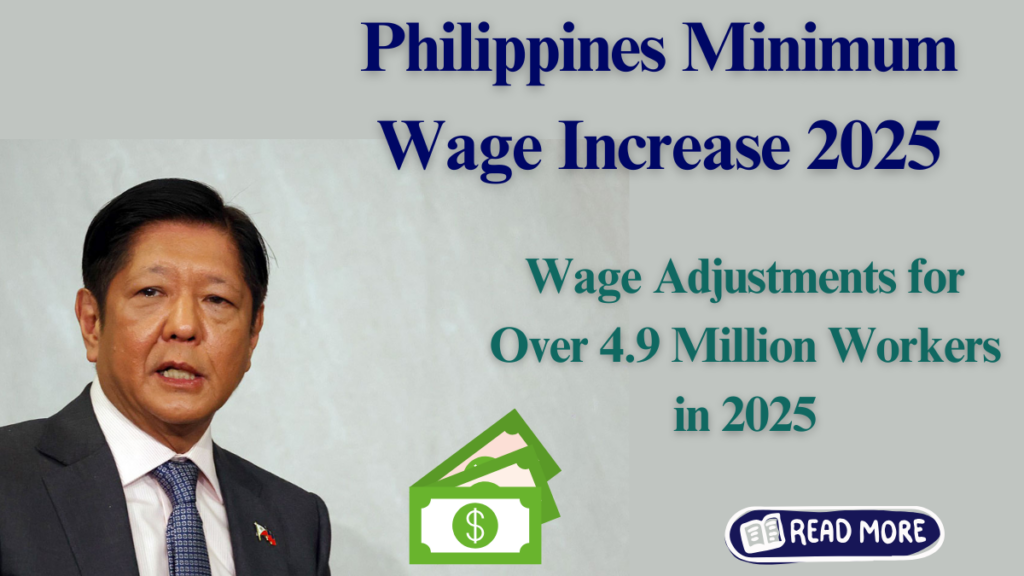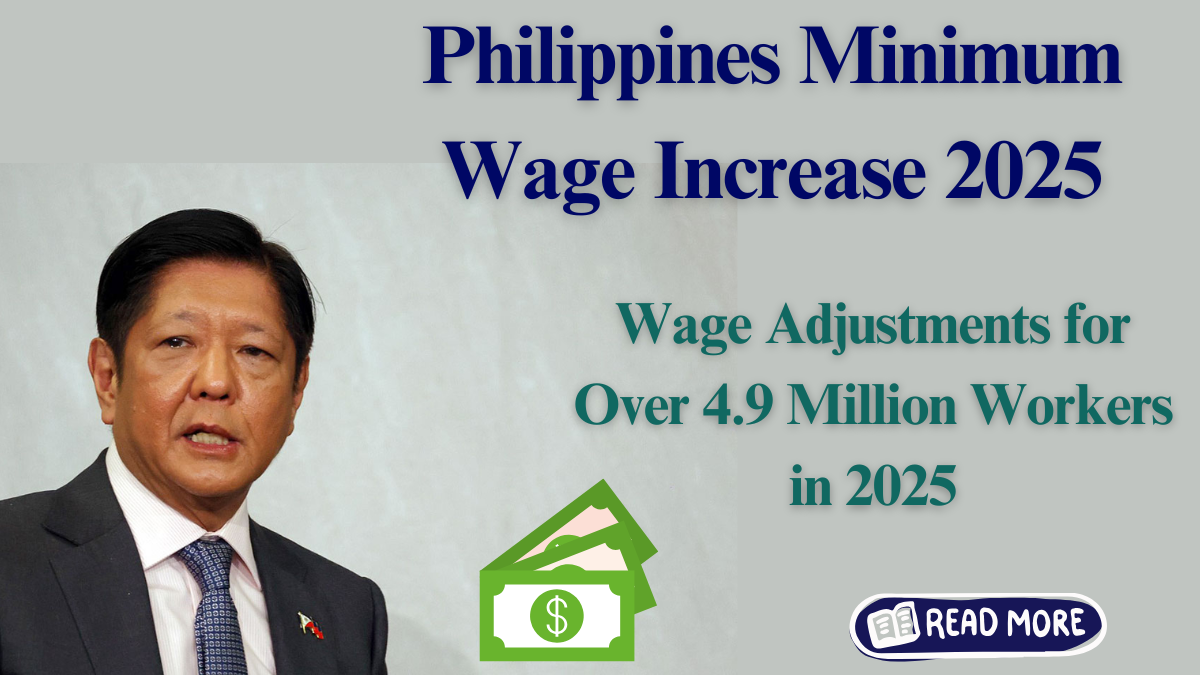The Philippine government has confirmed a new minimum wage increase set to begin in 2025, with adjustments made based on local economic conditions and the cost of living in each region. This move will benefit millions of workers across the country. The wage changes are being rolled out in stages, providing a structured and sustainable approach to improving workers’ salaries.

Regional Wage Increases
The wage increases are being applied differently depending on the region, acknowledging that living costs can vary across the country. Below is an overview of the key changes across various regions:
| Region | Wage Order | Increase Amount |
|---|---|---|
| Metro Manila | Wage Order NCR-25 | PHP 35 daily wage increase |
| Northern Mindanao | Wage Order RX-23 | Staggered increases, reaching PHP 461 by July 2025 |
| Other Regions | Various Wage Orders | Gradual increases based on local conditions |
For example, in Metro Manila, workers will see an increase of PHP 35 daily, benefitting over 4 million people. Meanwhile, Northern Mindanao will experience a phased wage increase, reaching PHP 461 by mid-2025. This approach ensures that the wage adjustments align with the region’s economic realities.
Changes to Wage Review Guidelines
In May 2025, the National Wages and Productivity Commission (NWPC) introduced new revisions to wage determination rules, designed to make the system more responsive to the country’s economic shifts. This change aims to allow wage boards more flexibility in issuing new wage orders and making adjustments more frequently if necessary.
Key updates include:
- Wage boards can now initiate reviews up to 60 days before the anniversary of a wage order.
- New wage orders can be issued within a year as long as they meet legal requirements.
These adjustments aim to ensure that wages remain aligned with inflation and economic developments, helping workers maintain their purchasing power.
Complementing Wage Growth with Productivity Programs
In addition to the wage increases, the government has introduced several programs aimed at boosting productivity in various sectors, which will help sustain long-term wage growth.
| Program | Purpose |
|---|---|
| Profit-sharing Programs | Encourages businesses to share profits with employees based on their performance. |
| Sector-Specific Efficiency Programs | Aims to help industries with lower productivity improve and become more competitive. |
These initiatives are particularly focused on regions with lower productivity, such as Mimaropa and Caraga, with the goal of stimulating economic growth and further increasing wages in the future.
Delays in Bicol and Davao Regions
Two regions—Bicol and Davao—have experienced delays in implementing wage increases due to specific challenges.
- Bicol Region: The aftermath of Severe Tropical Storm Kristine in October 2025 halted the wage discussions. Meetings will resume by February 2025.
- Davao Region: Delays were caused by ongoing consultations with business groups and labor representatives. Final decisions are expected in early 2025.
These challenges highlight the complexities involved in implementing wage changes, as the government has to balance economic conditions and the needs of both workers and businesses.
Improving Wage Transparency
To ensure that the wage system is fair and transparent, the government is working to simplify wage structures. This makes it easier for businesses to comply with new regulations and for workers to understand their rights and entitlements.
Wage boards will regularly assess the economic conditions to make sure that the wage orders stay in line with the country’s financial health. This transparent process aims to create a stable and predictable wage environment for all workers.
Frequently Asked Questions
When do the new wage increases take effect?
The first wave of increases starts in January 2024, with subsequent hikes scheduled for the following years.
Which areas will see the most significant increases?
Regions like Metro Manila and Northern Mindanao are seeing substantial wage hikes, with Northern Mindanao’s wage expected to reach PHP 461 by mid-2025.
How does the government plan to keep wages aligned with economic changes?
The government has introduced more flexible rules for wage reviews and is implementing programs to boost productivity across various sectors, ensuring long-term wage stability.
What kind of programs are in place to improve productivity?
The government is promoting profit-sharing programs and efficiency initiatives tailored to specific industries to help raise productivity levels in lower-performing sectors.
Why have there been delays in Bicol and Davao regions?
Delays in Bicol were caused by the impact of Tropical Storm Kristine, while in Davao, consultations with business and labor groups are still ongoing, which has delayed the final decisions.
Click here to learn more.
Pari is a passionate writer known for captivating stories that blend imagination and reality. Inspired by travel, history, and everyday moments, Pari crafts narratives that resonate deeply with readers.
